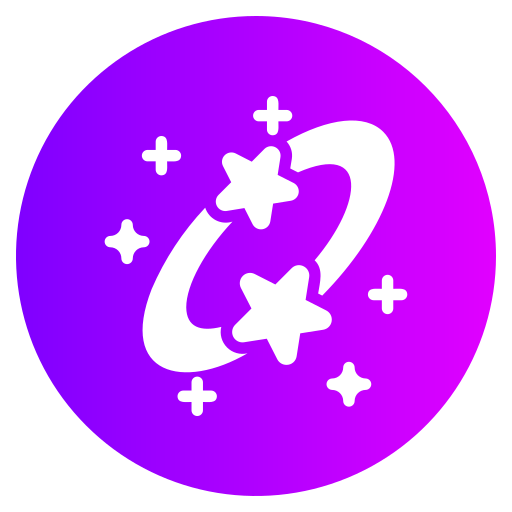Understanding the Basics of Your Natal Chart
Reading a natal chart might seem like deciphering a complex code, but once you get the hang of it, it’s a fascinating journey into your cosmic blueprint. A natal chart, also known as a birth chart, is a snapshot of the sky at the exact moment and location you were born. It maps out the positions of the planets, the Sun, and the Moon, revealing insights into your personality, relationships, career, and more.
The Components of a Natal Chart
Your natal chart is essentially a circular diagram divided into twelve sections, each representing one of the zodiac signs. Each section, or house, relates to different areas of life. Here’s a breakdown of the key components:
-
Planets: Each planet in your chart represents different aspects of your personality and experiences. For example, the Sun represents your core identity, while the Moon reflects your emotional self.
-
Signs: The zodiac signs are the backdrop against which the planets move. Each sign has unique traits that influence how the planets express themselves. For instance, if your Sun is in Leo, you might be naturally inclined towards leadership and creativity.
-
Houses: The twelve houses represent various areas of life, such as relationships, career, and home. The planets’ placements in these houses tell you where certain energies will manifest.
-
Aspects: These are the angles that planets make to each other, which can influence how different parts of your chart interact. For example, a harmonious aspect between Venus and Mars might indicate a strong drive in relationships.
How to Interpret Your Sun Sign
The Sun sign is perhaps the most well-known aspect of astrology. It’s determined by the position of the Sun at the time of your birth and represents your core essence. To interpret your Sun sign:
-
Find Your Sun Sign: This is straightforward if you know your birth date. Each sign spans roughly a month, so you can easily look up your Sun sign based on your birth date.
-
Explore Your Traits: Each Sun sign has its set of characteristics. For instance, an Aries might be assertive and energetic, while a Pisces might be intuitive and empathetic.
-
Consider the Whole Chart: While the Sun sign is crucial, it’s just one part of the chart. Understanding how it interacts with other planets and signs will give you a fuller picture of your personality.
Reading Your Moon Sign
Your Moon sign is equally significant as it represents your emotional landscape and inner self. Unlike the Sun sign, which is outward-facing, the Moon sign delves into your feelings, instincts, and subconscious mind. Here’s how to interpret it:
-
Determine Your Moon Sign: To find your Moon sign, you need to know your exact birth time and place. This sign indicates how you react emotionally and what you need for emotional security.
-
Identify Emotional Needs: For instance, if your Moon is in Cancer, you might find comfort in close family ties and a nurturing home environment. A Moon in Sagittarius, on the other hand, might seek freedom and adventure.
-
Look at the Moon’s Aspects: The way your Moon interacts with other planets can influence your emotional responses and needs. For instance, a Moon-Saturn conjunction might suggest emotional resilience but also a tendency to be hard on oneself.
Exploring Your Ascendant (Rising Sign)
Your Ascendant, or Rising Sign, is the sign that was rising on the eastern horizon at the exact moment of your birth. It represents how you present yourself to the world and the first impressions you make. Here’s how to explore it:
-
Find Your Ascendant: You need your exact birth time to calculate your Ascendant. This sign can reveal a lot about your outward demeanor and how you approach new situations.
-
Understand Its Influence: If your Ascendant is in Gemini, for example, you might come across as communicative and adaptable. In contrast, a Capricorn Ascendant might present a more serious and reserved exterior.
-
Consider Your Chart’s Houses: The Ascendant also determines the starting point of the twelve houses in your chart. This influences where different life themes are emphasized.
Analyzing Planetary Placements
Each planet in your natal chart occupies a specific sign and house, and understanding their placements can offer deeper insights into various aspects of your life. Here’s a basic guide:
-
Examine the Planetary Positions: Look at where each planet is positioned in your chart. For instance, Mars in Taurus might indicate a steady and persistent drive, while Mercury in Aquarius could suggest innovative thinking.
-
Interpret the Houses: The house a planet occupies highlights the area of life where its influence is most potent. For example, Venus in the 7th house suggests a focus on relationships and partnerships.
-
Analyze Aspects: Aspects between planets reveal how different energies interact. A harmonious aspect like a trine can indicate natural talent or ease in certain areas, while a challenging aspect like a square might highlight areas of tension or growth.
By piecing together these elements—Sun sign, Moon sign, Ascendant, and planetary placements—you can start to unravel the complex tapestry of your natal chart. Each component provides a unique lens through which to view your life and personality, making astrology a deeply personal and insightful tool.
